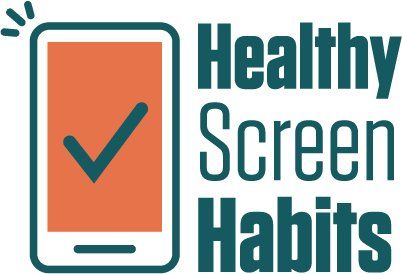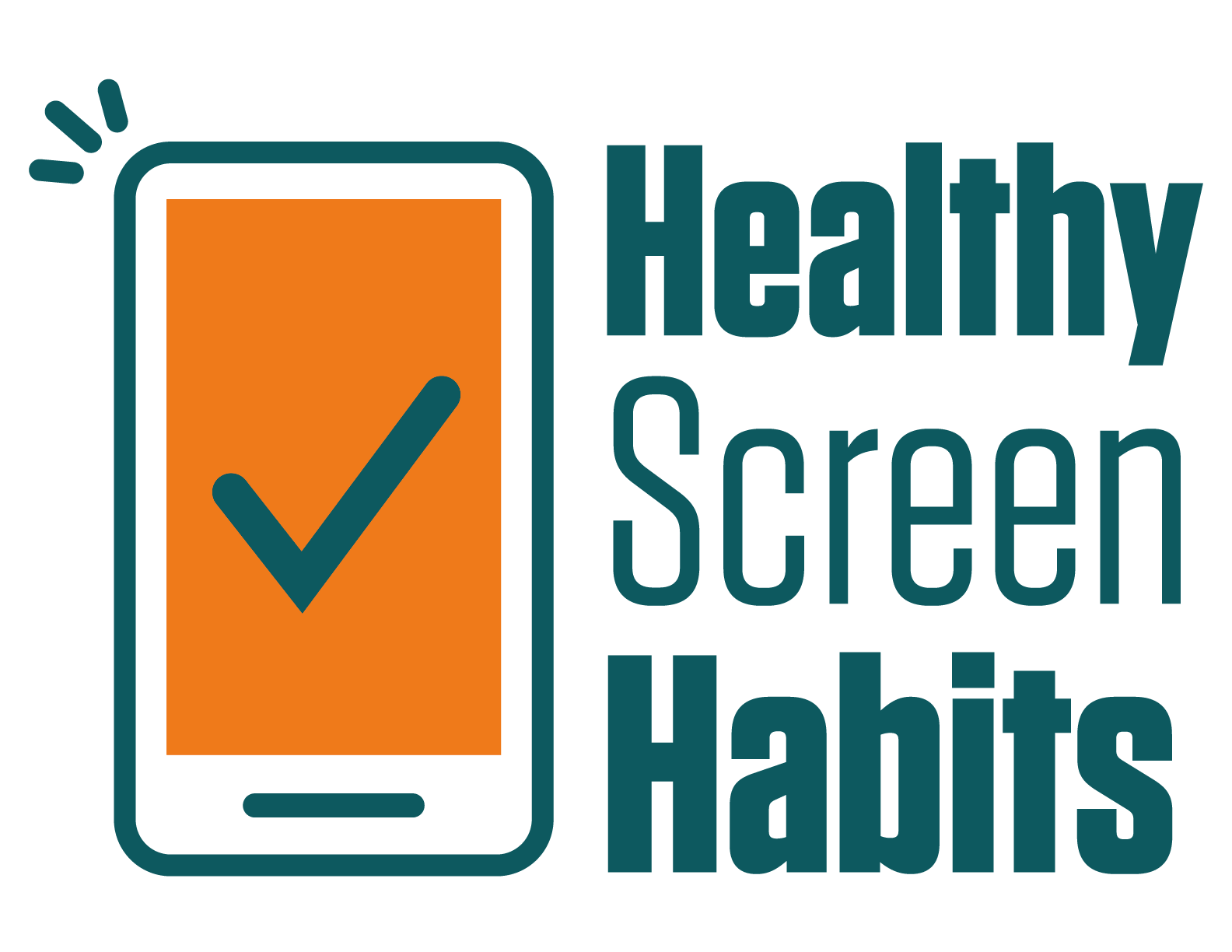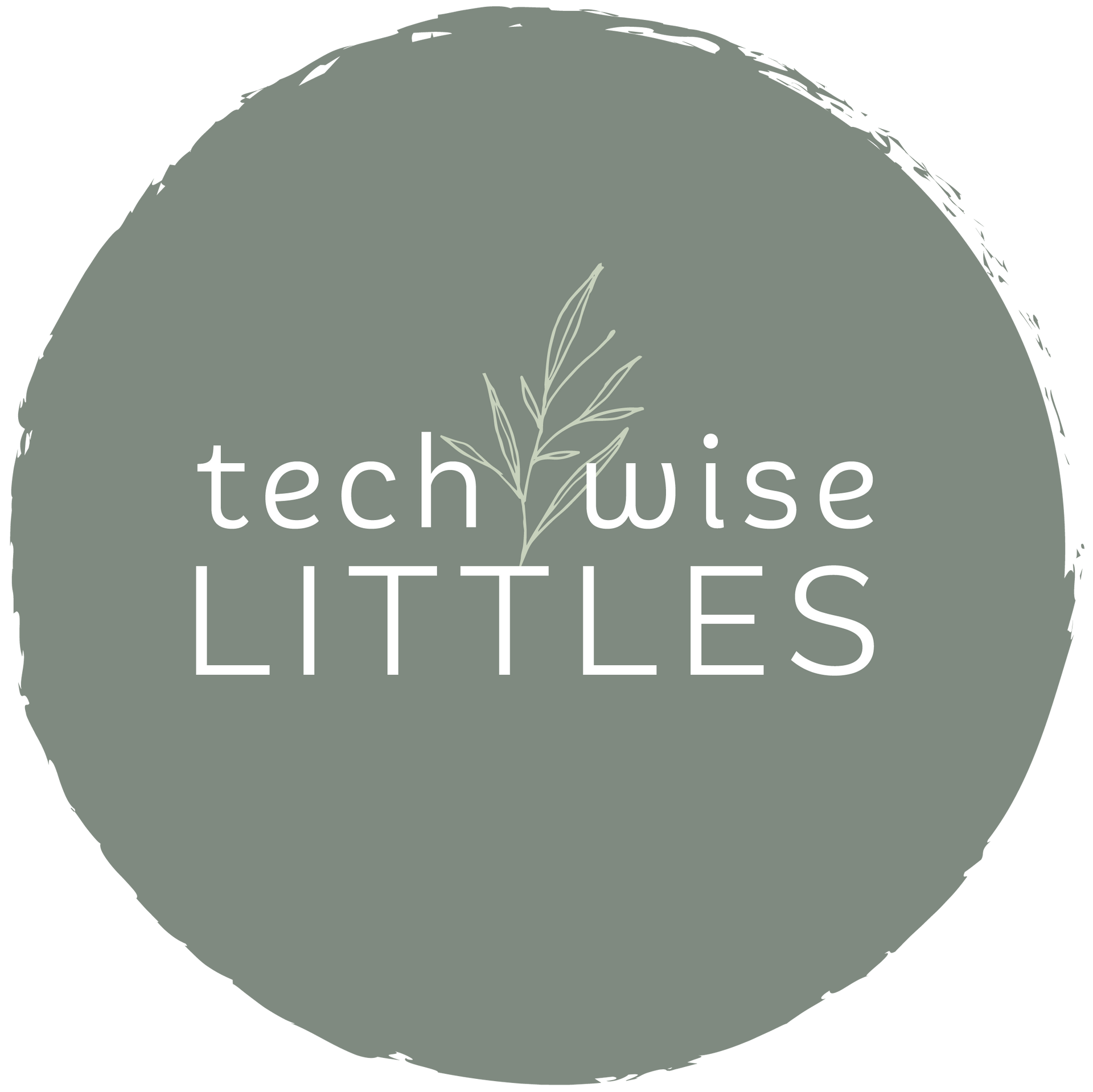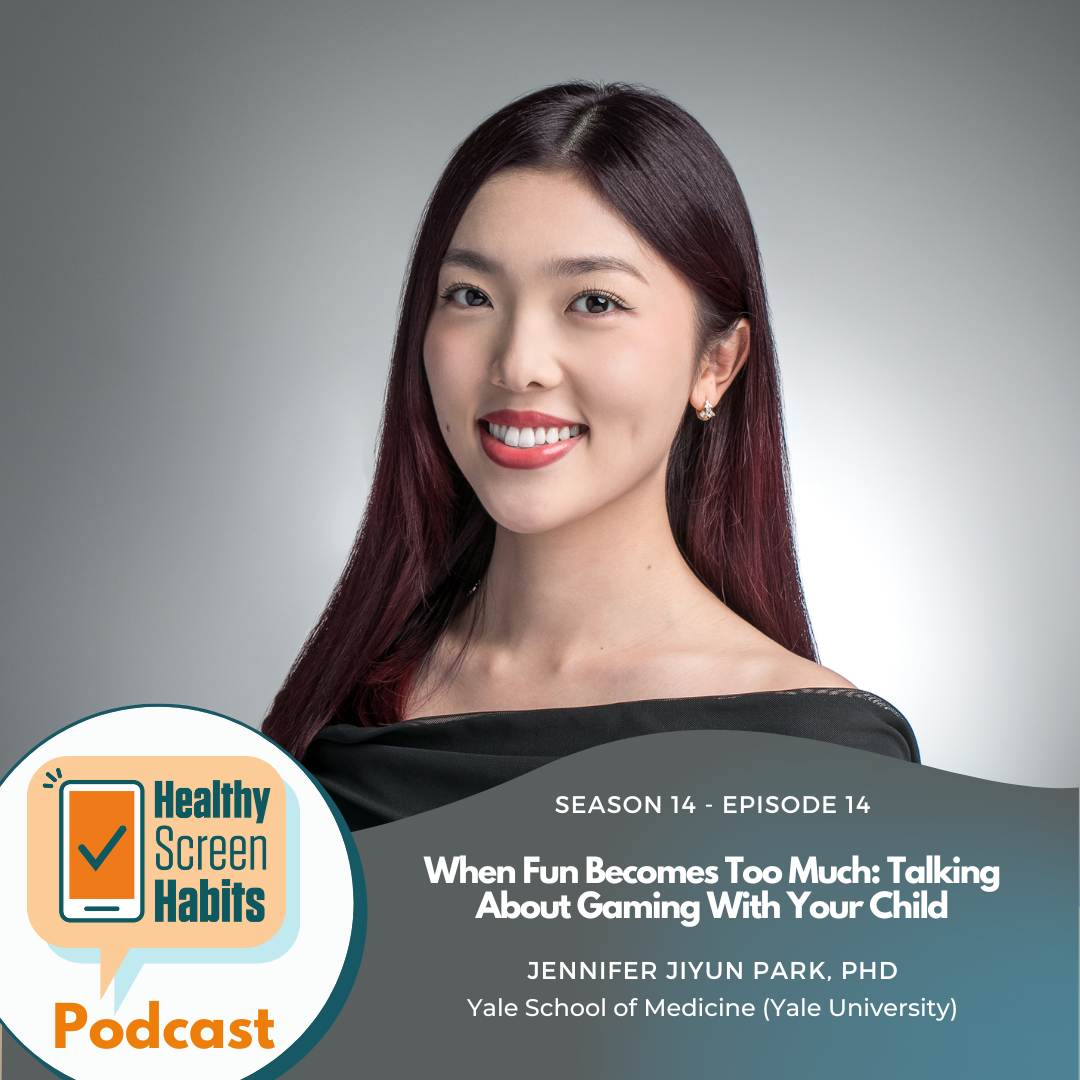S6 Episode 6: Babies and Technology - How Young Is Too Young? // Kay De Veer & Jennifer Strube of TechWise Littles
Hosted by Hillary Wilkinson
"Keep Screens at BAY:
B - Boundaries
A - Adult tool, not a toy
Y - You (the parent) are in charge
~Kay De Veer"
TechWise Littles is an organization on a mission to help create confident, tech wise parents raise healthy, tech wise littles from birth. Co-creators, Kay De Veer and Jennifer Strube, have decades of experience in education and are mothers of littles themselves. Their content is relevant, engaging and readily applicable in your own home.
In this episode we talk about how to put boundaries around screens, enjoy video chatting with full benefits and put the safest, healthiest screen habits into place with your littles!
Healthy Screen Habits Takeaway
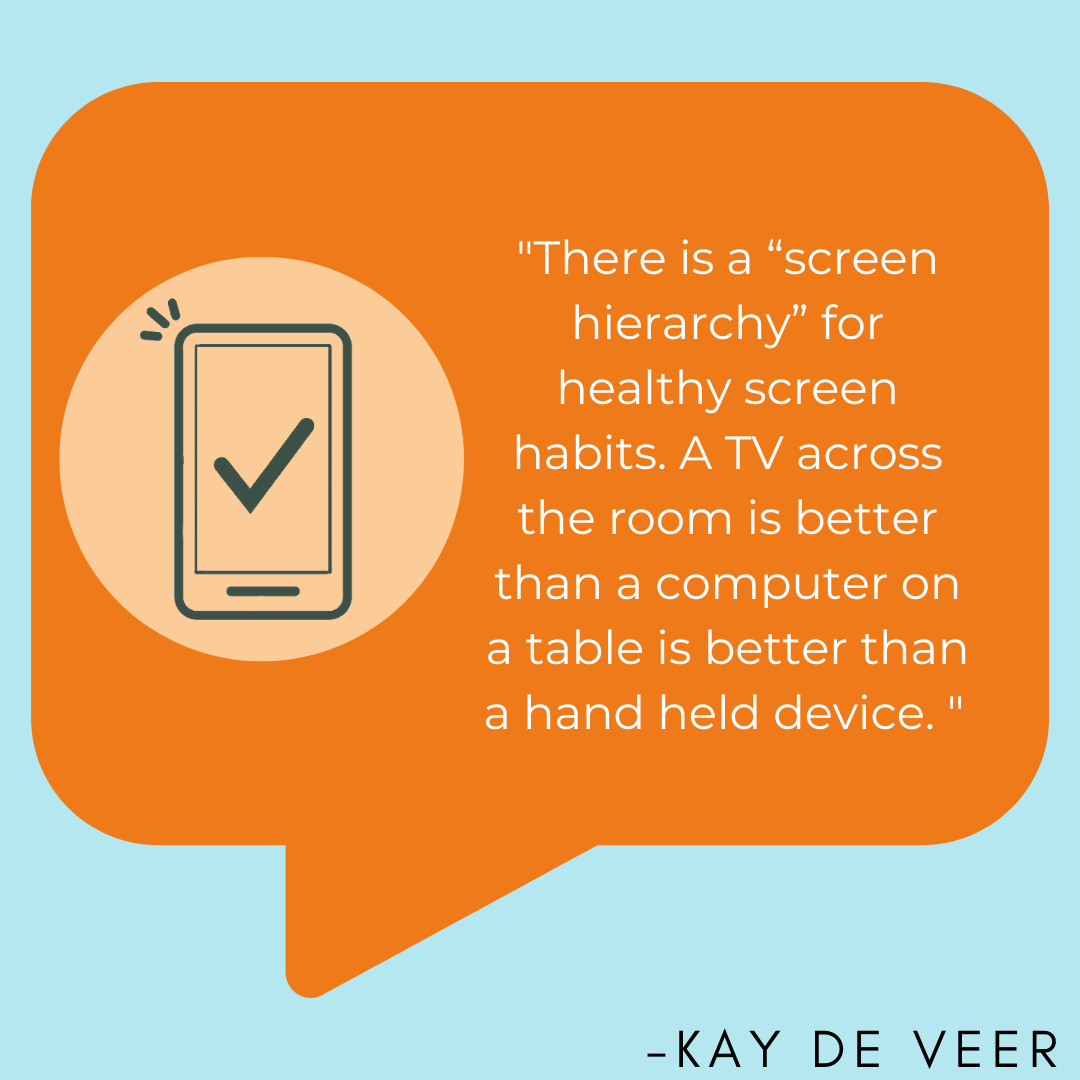
Resources
For more info:
TechWise Littles Website: https://www.techwiselittles.com/
Instagram: @TechWiseLittles
Show Transcript
Hillary Wilkinson (00:01):
If you've been scrolling early childhood parenting social media you may have been drawn to TechWise Littles. They're beautifully crafted, aesthetic of calm colors and outdoor shots make their content reflect their Santa Barbara lifestyles and introduce you to the real life moms behind the organization. Jennifer Strube and Kate DeVeer are the founders of Tech-Wise Littles, an organization that's on a mission to help create confident tech-wise parents raising healthy, tech-wise littles from birth. I am thrilled to have them both here today, TechWise Littles, welcome to the Healthy Screen Habits Podcast.
Kay De Veer (01:22):
Hi Hillary, thank you so much for having us. Um, we're really happy to be here talking with you. I'm Kay. Um, I've been in education for 12 years now. I was first an elementary school teacher and now I'm an educational therapist here in Santa Barbara.
Jennifer Strube (01:45):
I'm Jennifer. I've been in education for over 20 years now, both as a teacher and as a licensed family therapist.
Hillary Wilkinson (02:01):
Excellent. So Jennifer, you have this kind of like, dual superpower of being both an educator and a licensed family therapist. How did this key into your starting tech-wise littles?
Kay De Veer (02:15):
Yeah. Um, great question. So, you know, Kay and I are both in, well, she's an educational therapist and I have this dual hat I wear. Um, and we often work with middle school parents a time where the teen brain is so entrenched in the tech world, everything from social media to video games. Um, but as new moms we saw the conversation around Healthy Tech seemed to be starting a little bit too late in our opinion. Um, we thought it should start from day one and
Hillary Wilkinson (02:49):
Okay, so that's what led you to target this. Your, your, your organization focuses on ages zero to five years. So a lot of people do think, wow, I need to be, to be starting those conversations that early, you know, they're not aware of that.
Kay De Veer (03:04):
Yeah. It, it can kind of seem silly teaching tech to babies. Um, but you know, by the age of two, the average toddlers on screen over two hours a day. And so this really fueled Kay and I as new moms because as parents we saw our babies were just as fascinated with tech as the teenagers we work with.
Hillary Wilkinson (03:35):
Right, right. Do you have specific thoughts surrounding video chatting?
Kay De Veer (04:20):
We, we definitely have thoughts about video chatting. It's, it is the best form of screen time and that is because it is interactive, but with someone who cares about the child on the other side of the screen, someone who knows the child, loves the child and is going to have a shared experience with the child. That's really special and powerful. But we also wanna share that it's still a screen and we have some really fun kind of tips you can do with your child to make that time, um, video chatting as interactive and powerful as possible. Um, because it is still a screen, even though it's absolutely the best type of screen, parents don't wanna be aware of time of day, you know, video chatting right before bed is still screen time. It’s
Hillary Wilkinson (05:17):
Still, oh, I'd like, I wouldn't even think you're right because so many people think like, oh, kind of like tuck them in before bed or, you know, but like, you're right with that blue light and the stimulation. I, sorry for breaking in there. I, I just, I'd never even thought of
Kay De Veer (05:32):
That as much. Cause we agree with the AAPs recommendations that it is the best type of screen time and it is important for that connection when you can't be in the same place as a family member. But we also wanna keep, you know, remembering it still a screen and, you know, under six months, you know, I, my boys are one now, so we just went through this, um, under six months. Your littles really aren't going to get much out of video chatting. It really is just this shiny object that's so exciting and stimulating to them. They're not getting that connection that is so powerful from video chatting. So under six months, they're really not gonna get much, you know, um, after six months is when they're, they're gonna kind of start to be able to recognize that person on the other side of the screen.
Kay De Veer (06:16):
So some fun things you can do is they can play peekaboo, they can, you know, that's just a silly little thing, but playing peekaboo with the other person, it's gonna make that joint experience. Um, they can play, you know, um, a, a favorite dance song and they can both dance together on both sides of the screen. You'll use props, you know, um, you can have, you know, my boys video chat with her aunt, um, she has a stuffed animal. My boys have a stuffed animal, they have the same one. So it's this connection that they know, oh, that's a real human on the other side that cares about me. And you can connect that to, to the life that they have real in person. Um, our favorite one is, um, mirroring the person on the other side, which is if, you know, if my boys are video chatting with their grandma who's out of state and she wants to blow them a kiss or give them a hug, I do that for my boys on our side of the screen. So we're trying to make that, that person on the other side come to life, which is really, really important.
Hillary Wilkinson (07:15):
Can you take that a little bit further? What does that mean when you're like, I do that. I've seen you do it and I think it's so powerful. I just wanna make sure for people who are listening to this, they can visualize it as you do it. So say grandma blows a kiss, and then what would you do as the parent on the - on the receiving side,
Kay De Veer (07:35):
I take my little boy and I give him that kiss. I give him that kiss on the cheek and I say, this is a kiss on grandma. Or if grandma's giving him a hug, I physically give my little guys a hug.
Hillary Wilkinson (07:44):
So sweet.
Kay De Veer (07:45):
That's, that's what we want out. Any sort of screen experience is as much interaction, touch. Um, it's, uh, you know, eye contact. We want them to have it to be as real world as possible. Um, and then one more little one, I know Jennifer's little girl loves this, um, is giving them a job as they get a little older saying, okay, we're gonna call, you know, call uncle and do you want to turn the call on at the beginning or, you know, press that end button at the end, you know, give them a job, give them agency. Um, so you can kind of see our pattern. It's about making it as real life, as interactive, as intentional as possible. It's what we want out of, out of screens and, and, and, um, especially when we're video chatting, more than ever these tools, these tips can come into play.
Hillary Wilkinson (08:32):
That's fantastic. I love that. And I, um, I never thought about that. The use of props like puppets or stuffed animals or something like that. I know it would just be such a huge hit. I love that <laugh>. Okay, when we come back, I'm gonna ask about some suggestions for how to talk tech with our very youngest family members. But first we need to take a little break.
—---Ad break - Thank you to Drs Peddie—---------------
Hillary Wilkinson (09:47):
Today I'm speaking with the founders of TechWise Littles, two women who have combined experience in education that totals over 30 years of practice and we get to tap into this knowledge base. Now kids are extremely literal and sometimes this can be a little problematic at times. What sort of advice or tips do you guys have in regards to talking to children about devices?
Kay De Veer (10:22):
That's a really great question. You know, devices are still so abstract to our little ones since they're around so much we kind of assume they know what's going on with the device. But having, you know, Jennifer and I both have, uh, between the two of us, we have three kids under three, you know, she's got a little under three and I have two. Um, and you know, we're both one and we've realized this is a really abstract device to them. And so something that you can use, some language you can use is especially around when the phone quote dies, <laugh>. So we say to our children, oh, the phone died. And to them they're still learning what that concept means. That's actually a very abstract concept when something, um, physical actually dies. But when the phone dies, that can be really confusing. So the language we like to use is “the phone's taking a nap. Just like we take naps, it's going to recharge and do you wanna help me find the charger? And when the phone's up from its nap, we can actually use it again.” We can, you know, if we were just talking about video chatting, if we were video chatting, we can call grandma back after the phone takes a nap and it really can help it can curb a tantrum. And it can also help 'em understand that things need to rest and that we can
Hillary Wilkinson (11:39):
Just like us.
Kay De Veer (11:40):
Yes. And they're not readily available. And Jennifer, and we can talk about that more later, but Jennifer and I feel really strongly that these, we need really strong boundaries around these tools and these devices. And that's a really, really great way to describe. They can't be out all the time and they do need to be put away and they're gonna take a nap just like we do. Or they're gonna go to sleep just like we do.
Hillary Wilkinson (12:01):
I love that.
Kay De Veer (12:03):
Um, yeah, it's, it's really powerful. So we feel like just little, little switches like that can, can change how you interact with the device and how your child interacts with the device.
Hillary Wilkinson (12:12):
Yeah. Another, um, kind of vocabulary area, just continuing that train of thought is at this point it seems like tech in our lives is as ubiquitous as food say. And one of the ways that, uh, we hear it discussed a lot is, um, in terms of like digital nutrition, which is a term that was trademarked by a Jocelyn Brewer who is a therapist and researcher out of Australia. Um, I love the term, so I always wanna give the person who coined it the correct credit <laugh>. I think the reason also why this term resonates is because it's something we all kind of relate to in that grow. You know, we've all know about the importance of eating a balanced diet and not all foods are created equal in their nutrition. And so knowing that when we deal with dietary nutrition with food, we often talk about sort of an “eat this, not that” type of approach for making selections. And I'm wondering, do you guys have the same sort of guidance to crafting our families' digital diets?
Jennifer Strube (13:28):
That's a great question. Um, and when we think of diets, you know, there's two different kinds of diets. There's the diet to lose weight, like restriction diet where you know, no, no, don't eat that, avoid that. And there's actually a, a secondary definition of diet, which is a healthy daily diet, like looking at your whole day and what nutrients can you take in to get all that you need to power yourself through the day? So when we think of a tech diet, that's the definition we're looking at. We're less looking at “no, no, no, don't, don't, don't” we wanna look at the whole day and how we can get all the good nutrients we need. Um, and one of those, one of the ways to look at those tech diets is to think about what we call digital swaps. Um, so it's not necessarily that screens are bad, it's more like there are only so many free hours in a day.
Jennifer Strube (14:36):
So think of your own adult day. You know, I can either spend my hours at work or on Netflix or YouTube or reading a book or working out or cleaning, meeting friends. There's so many ways you can fill the hours of your day and none of them are bad options, but we don't have time for it every single day. Right. And the same goes with our little ones. So when more screen time gets added to the little's daily diet, think about what gets swapped out. So when we swap in screens, what are we swapping out? And it's normally things like playtime or outdoor time or imagination or, or boredom or, or boredom's first cousin, which is creativity, which is so important. Or reading or conversation or face-to-face interaction or touch or eye contact. You, you get what I'm saying? Right. And all of those components in your child's day, in their daily diet, those are the things that are proven to boost their social skills. They're learning their cognition, their brain growth.
Hillary Wilkinson (15:43):
Those are kind of the broccoli and the blueberries <laugh>.
Jennifer Strube (15:46):
Correct. <laugh>
Hillary Wilkinson (15:48):
The superfoods!
Jennifer Strube (15:49):
Those are the superfoods. Um, so it's not, it's reframing it rather than, it's not bad screens, it's what good nutrients fall to the wayside because screens get swapped into the daily diet. Um, because those are those super foods for your little ones heart and brains, those are the nutrients they, they physically, emotionally, spiritually need for their brains and hearts to grow.
Hillary Wilkinson (16:16):
Excellent. Yeah. I love the distinction that you make because I think we have gotten, I don't know, I feel like we have gotten very judgmental around time online and like you say, like where there's good good time versus bad time. And I like how you're putting it on this continuum of it's neither necessarily good or bad per se, but it's within, within a range.
Jennifer Strube (16:44):
Yeah, it's just looking at the bigger picture of when we swap this in, what are we swapping out and then looking at that like you would your own diet on like a daily basis, a weekly basis or a yearly basis. Like, you know, uh, in December I plan to go to holiday parties, so I plan that December is where you're gonna eat rich foods and probably drink rich drinks. And then January becomes more of a leaner time. You know, people do something like dry January or vegetable January.
Kay De Veer (17:32):
You know, maybe, maybe some days are high screen days and then you gotta swap that. So, um, you know, maybe at a long travel day and you needed that screen to get through the long travel day with your little one. But when you land where you're going, then take the next few days off and swap that out and be where you are. Um, but it's really looking at that bigger picture.
Hillary Wilkinson (18:04):
I found tech-Wise littles on Instagram. And one of the things I really like about your account is that you have, you present really dense information in very absorbable amounts. Your tips are very doable and you have really good tools that you can kind of mentally hang these ideas on. One of the ones that I like is you're keeping technology at bay, which is B..A..Y...And could you spend a minute explaining that?
Kay De Veer (18:40):
Definitely we love that one. Um, we are such firm believers that devices are adult tools and we really would love, our big mission is to have that shift start from day one. Like you said, our mission isn't, isn't with older kids, it's the little ones. It's you bring your kiddo home from the hospital and you've already made this mental shift. You've already cultivated a strategy with your partner about how you're gonna handle devices. And so this acronym that you mentioned that we love BAY, um, stands for, and I can go into a little bit. B is for Boundaries, have them with your device. Now, I mean we don't <laugh> we all know we need this for our own devices, obviously as an adult, um, and something we all struggle with. But this is for your little, like you are the adult, you are in charge. And I will continue to go into our acronym, but you create the boundaries.
Kay De Veer (19:35):
This, this is your device. Think often we think that, um, a device is a to can be a toy and that your child kind of has the right to play with that toy. And this B is nope, you, it, it's, it's your boundary. Um, and then our A is it's an Adult tool. <laugh>, it's not a child's toy. And our Y is You are in charge, the little one's not in charge. And uh, something we like to think about cuz it, it is kind of complicated cuz our, our phone is out all the time and Jennifer and I very much feel like this isn't a bad device, this isn't a bad thing, we don't wanna call it bad. So we kind of like to think about it in a weird way. Kind of going back to the diet food piece is uh, like, like a kitchen device, a blender or a knife. It's out all the time. My husband cooks a ton. He's always cooking. The boys are around, they aren't bad. Knives aren't bad. A blender isn't bad, but it's not theirs to play with. It's not their toy, it's not safe for them.
Hillary Wilkinson (20:34):
Right.
Kay De Veer (20:35):
So we feel very strongly it’s the same about a device. They will learn about it, they will learn that we communicate with them, that we use them to talk to our family and friends, that we use them for work. There's so much good that comes from our devices. So, but, and there's so much good that comes from a knife, but I'm not gonna go hand it to my one-year-olds right now. Right? So I think it's a really nice way to think about how we handle devices in our life. So boundaries, it's an adult tool, not a child's toy. And you are in charge. And we, we really hope that we can instill that in parents that really is our mission from the day they come from the hospital. Because it's so overwhelming. And, um, yeah, it's just, that's, that's what, that's what we're trying to do here. And so yeah, we love that acronym too.
Hillary Wilkinson (21:16):
You're doing a great job of explaining it all why they need to be tools, not toys. So we're going to take a short break and when we come back I'm going to ask the experts at Tech Wise Littles for their healthy screen habit.
—--- Ad break : HSH Website —----
We are back. I'm talking with Kay and Jennifer, the relatable mom therapists behind the program, TechWise Littles. On every episode of the Healthy Screen Habits Podcast, I ask for a healthy screen habit that our listeners can put into practice in their own home. I can't wait to hear yours.
Kay De Veer (22:35):
Oh Hillary, there's so many <laugh>.
Hillary Wilkinson (22:37):
Yes, I know! That's why I thought, oh my gosh. We could do a whole episode on tips from you guys and that's why I love your feed!
Kay De Veer (22:46):
Um, so one you could take home today, um, is there is in fact a screen hierarchy. Jennifer and I have talked to, um, occupational optometrists, occupational pediatric therapists. We have done the research. There is a screen hierarchy and um, the best screen, if you're going to have your child, if you choose to have your child watch some sort of entertainment, the best screen is a screen across the room. So think: a television screen across the room. This is going to be your first choice over an iPad or a device in their lap. Um, of course we could go into the type of content on the screen as well, but our, I'm gonna keep it simple. Our big takeaway is there is a screen hierarchy TV across the <laugh>, across the room is number one. If you don't have access to that, the second one would be a computer screen across the table. You can kind of, you know, see the theme here. You want the device not in your child's lap. You don't want them looking right down at at it for a few reasons. Um, but um,
Hillary Wilkinson (23:48):
Can you talk about, like, about those reasons I'm really interested in hearing specifically about how you talked about speaking with, um, pediatric optometrists or ophthalmologists. Yep.
Kay De Veer (24:00):
Optometrist. Um, yes. They're, you know, she gave us a great, um, insight that, um, our, our littles when they come into this wonderful world are meant to look far. They're developing their vision and they're meant to look far. Imagine that, that's why we love posting up being in the outdoors cuz they're meant to look at trees. They're meant to look into the sky. They're meant to be, you know, being in the world. Our eyes are meant to develop that vision to see far and our eyes, these littles eyes are developing zero to five, especially in such, in instrumental years that when they're looking near, you can imagine the the brain, the their eyes are going to adapt accordingly to what they're learning.
Hillary Wilkinson (24:41):
When they looking in and in those stages, their brains are being hardwired. So that's the important part about this zero to five I think gets glossed over. Exactly.
Kay De Veer (24:52):
Exactly. They're adapting to what they know and, and, um, they're adapting to that experience they're having in those early years. So the more a little is looking at a screen really close their brain, their eyes are going to adapt to that. So, so they're not, they're going to actually, their eyes are gonna change a little bit to look closer and have a little more nearsightedness. So, um, again, there's such a, there's so much nuance about all of this and that's why Jennifer and I never say this is how it works. It's
Hillary Wilkinson (25:24):
Right
Kay De Veer (25:25):
Or on boundaries and routines and structure in your own home. But, you know, we've done the research and we know that a further a screen away is going to be the best screen. So that's kind of our big tip. Um, our big,
Hillary Wilkinson (25:36):
So it would go TV across the room, computer across a table, and then what would be the next step in,
Kay De Veer (25:44):
You know, if you are going to do a, a phone or a device, that's kind of where what is on the screen comes into play. The content does make a difference. So that would, that would be our least preferred option.
Hillary Wilkinson (25:56):
Okay. And I've also heard optometrists and ophthalmologists talk about holding when you're holding a screen, teach your children to hold that their arms to make Ls, not vs. So to keep that distance. So if you have a l somebody who knows their letters, it's, you know, zero to five, you know, that's kind of an L versus a V might not make as big an impact on them. So
Jennifer Strube (26:24):
No, but that is really important. You wanna keep the distance from the child's. You never want a device closer to a child than their elbow to the tip of their fingers. Um, that is like the safe visual distance for their developing eyes because you're right from zero to five, um, 90% of their brain growth is occurring and all of these huge connections and neural pathways are happening. And this is the time more than any other time in your life where those early foundations for future predictors of success like resilience and adaptability and emotional regulation, they're happening now. Um, so another reason why handheld tech is the least preferred for kids, um, is mostly for mom’s sanity because those are harder to take away and have boundaries with your little, because it's much harder to teach your kid this is an adult tool rather than your toy when the kid is holding the tech.
Hillary Wilkinson (27:42):
Okay, so if our listeners wanna find out more about Tech-Wise Littles, I'm going to link your account in the show notes, but are there any other opportunities to connect with you guys like, you'd like to share?
Jennifer Strube(27:59):
Yeah, we would love to connect with you, answer your questions, and be a resource for you right now. The very best way to do that is on Instagram. Um, our handle is Tech-Wise Littles, um, and we post tips to try to make your life easier for you as new moms. If you have questions about Early tech, use your own or your littles.
Hillary Wilkinson (28:54):
Thank you guys both so much for being here today.
Kay De Veer & Jennifer Strube (28:59):
Thank you. Thank you.
About the podcast host, Hillary Wilkinson
Hillary found the need to take a big look at technology when her children began asking for their own devices. Quickly overwhelmed, she found that the hard and fast rules in other areas of life became difficult to uphold in the digital world. As a teacher and a mom of 2 teens, Hillary believes the key to healthy screen habits lies in empowering our kids through education and awareness.
Parenting is hard. Technology can make it tricky. Hillary uses this podcast to help bring these areas together to help all families create healthy screen habits.
